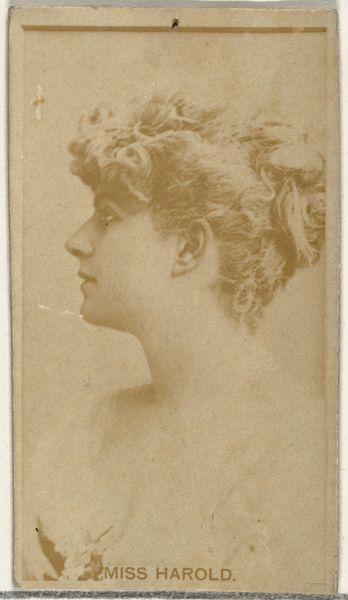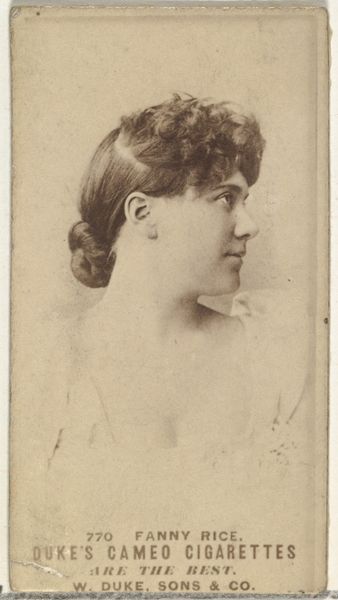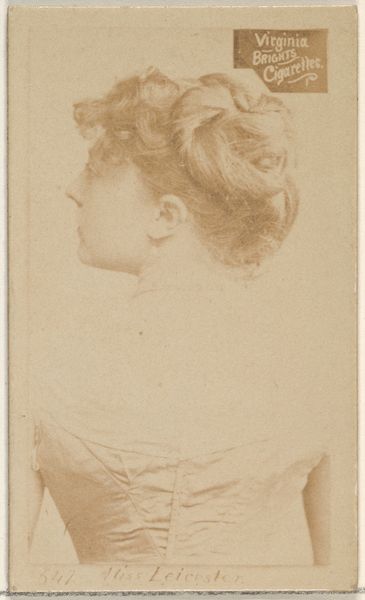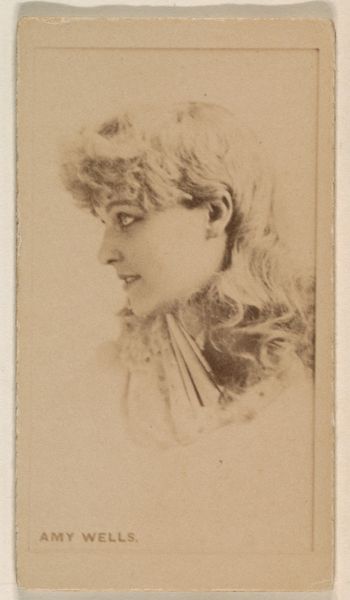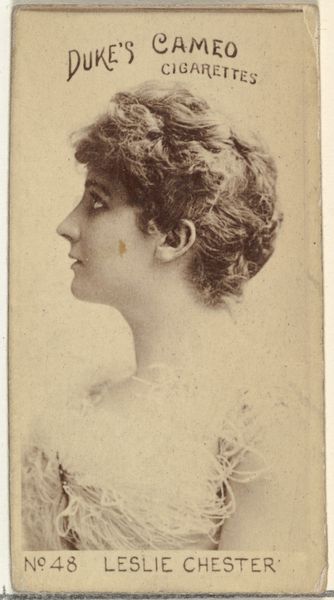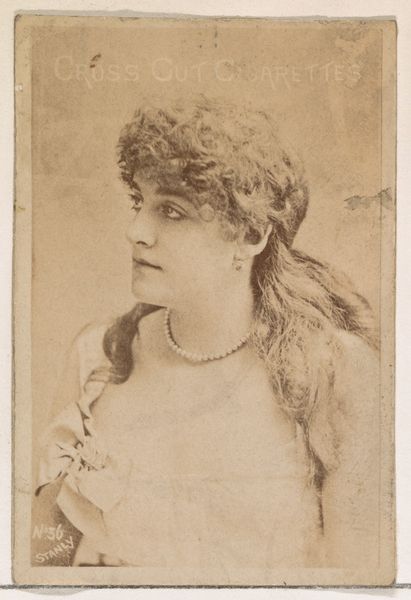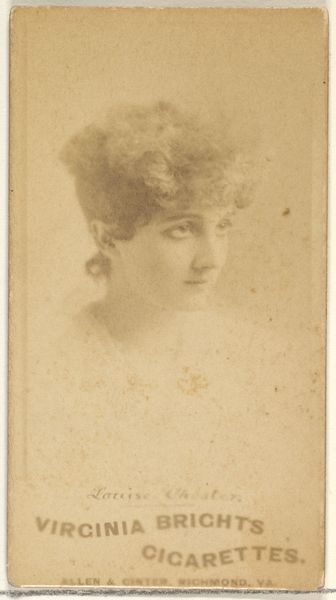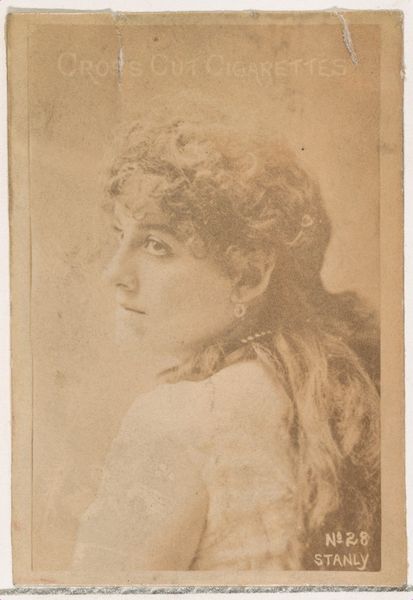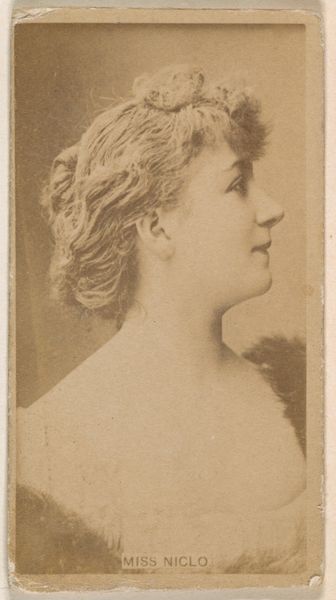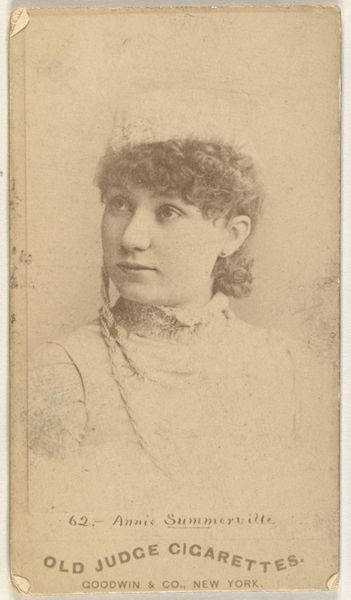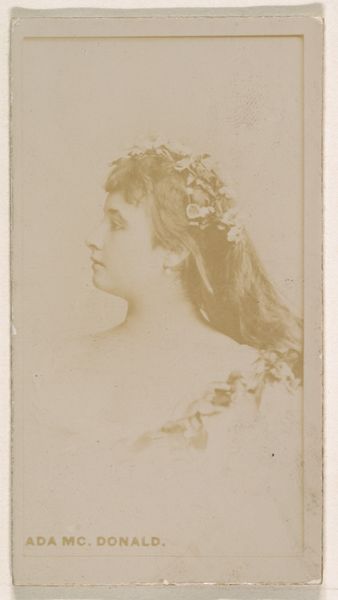
Genie Jerome, from the Actors and Actresses series (N45, Type 1) for Virginia Brights Cigarettes 1885 - 1891
0:00
0:00
drawing, print, photography, collotype
#
portrait
#
drawing
# print
#
photography
#
collotype
Dimensions: Sheet: 2 3/4 x 1 3/8 in. (7 x 3.5 cm)
Copyright: Public Domain
Curator: Let’s discuss this intriguing collotype, “Genie Jerome, from the Actors and Actresses series (N45, Type 1) for Virginia Brights Cigarettes.” It dates from between 1885 and 1891 and originates from Allen & Ginter. Editor: The sepia tone gives it an antique charm, doesn’t it? There’s an undeniable feeling of bygone-era elegance in her upward gaze. The print is small and yet she has such a presence. Curator: Absolutely. These cards were produced on a large scale and inserted into cigarette packs. Allen & Ginter capitalized on celebrity culture, recognizing the marketing potential in linking their product to the fame of these actresses. Editor: It is a great reminder that cultural icons weren't always passively adored. Their images, even those of women, were actively circulated and monetized, revealing a dynamic—sometimes exploitative—relationship between celebrity, commerce, and consumerism. There’s such an obvious performative aspect in her portrait, so this form of capitalism affected both image and subject. Curator: Indeed. This collotype also tells us a great deal about the commodification of femininity during the late 19th century. Cigarette companies often used attractive actresses to appeal to male smokers. The cards were collectible items which led to an increase in purchases and brand loyalty. Editor: But also think about the gaze—how do we contend with this portrait of Jennie today? Her smile feels like an invitation, a product of its time. Is it subversive? Or is it just more evidence that consumerism in capitalist markets reinforces inequalities through specific images and representations of women. Curator: These objects were designed for mass consumption. That being said, this form of promotional activity speaks to the era's entertainment industry as it shows us who and what society elevated in popular culture. Editor: To look at this photograph then, more than a century later, and situate it within the changing ideas and systems around fame, production, and power offers new insights. It shows us that these images aren’t just aesthetic—they're artifacts, revealing patterns about how we negotiate identity in consumerism. Curator: Ultimately, studying pieces such as the Genie Jerome cigarette card allows us to analyze a specific period of social and cultural values. Editor: It is a stark reminder of the intersections of entertainment, capitalism, and the constructed nature of identity and perception that we still grapple with today.
Comments
No comments
Be the first to comment and join the conversation on the ultimate creative platform.

